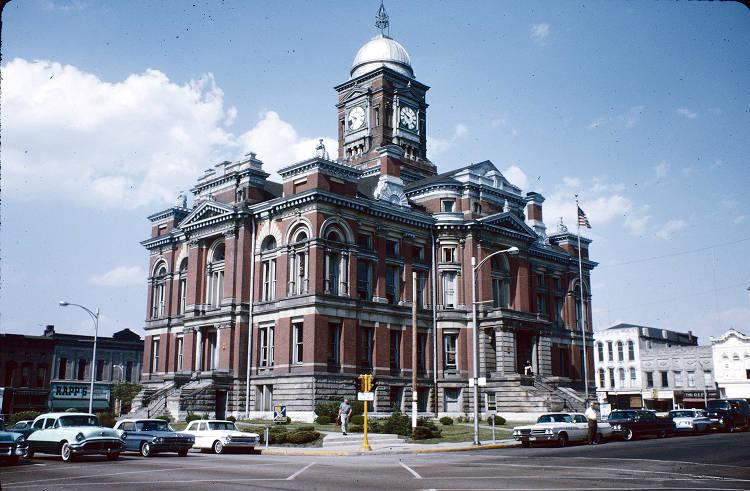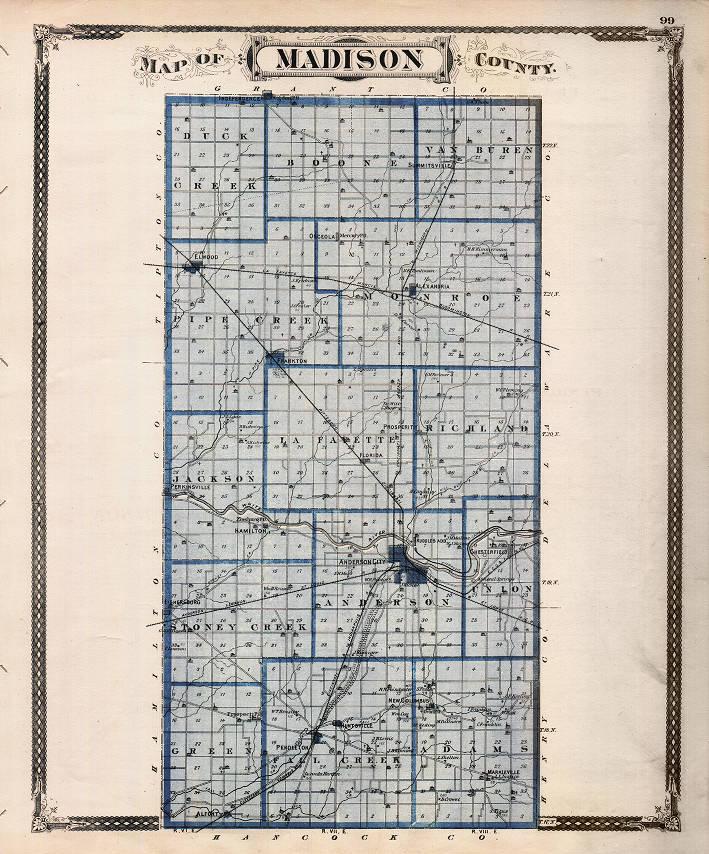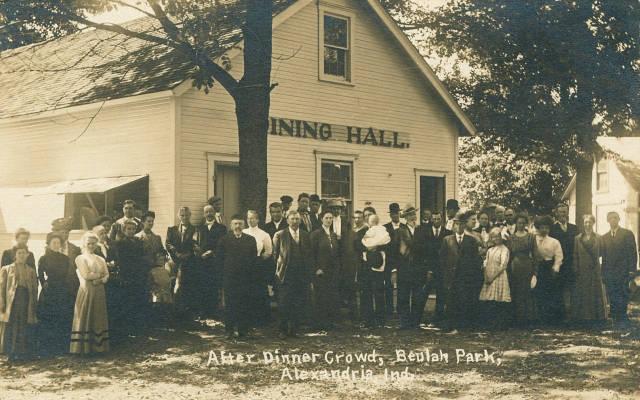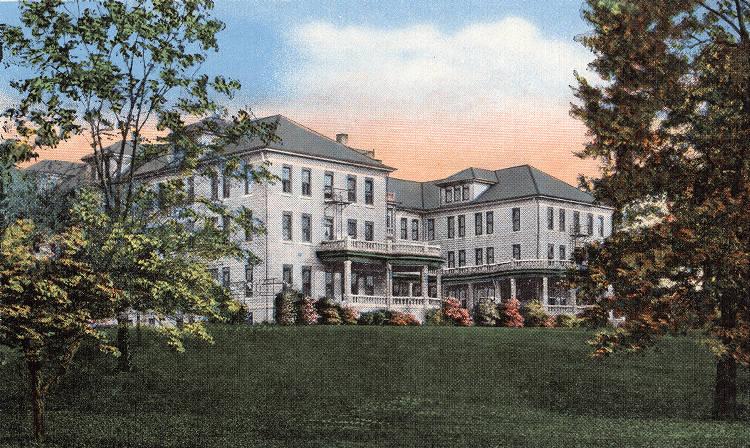Madison County is located northeast of Marion County and is part of the Indianapolis-Carmel-Anderson . It occupies 453 square miles of land located approximately 45 miles northeast of Indianapolis. , one of three incorporated cities within the county, has been the county seat since 1836.

In December 1816, the Indiana Territory, the land remaining in the former Northwest Territory after the separation of Ohio, Michigan, and Illinois, was admitted to the Union as a state. The loss of Native American titles to Indiana lands began in 1794, increasing in intensity with the 1809 Treaty of Fort Wayne and the St. Mary’s Treaty in 1818. These treaties included the future Madison County, which the Indiana state legislature authorized in January 1823. Settlers entered the county upon the completion of the government’s land survey in 1820. These people found a heavily wooded area filled with white oak, poplar, walnut, sycamore, oak, and fir trees.
Indiana elected to name the county for James Madison, the fourth president of the United States. The first white settler in the area was Irishman John Rogers in December 1818. He established a small community at Pendleton, which served as the first county seat. Two years later, eight families left their homes in Clark County, Ohio, and settled in the area around the Rogers’ homestead. More families from the Clark County area arrived in the early 1820s.

, a settler near the center of the county, influenced the history of the area when he sold property to John and Sarah Berry. The Berry’s donated 32 acres of their land to Madison County contingent that Anderson become the county seat. County officials agreed, and on November 7, 1827, John Berry finished his survey and platted out the original layout for Anderson. The county seat moved from Pendleton to Anderson beginning in 1828 and finishing in 1836.
With the county seat established in Anderson in 1828, town officials authorized the construction of its first courthouse that same year. Though revoked in 1829, the second authorization in 1831 passed, and the courthouse was completed and in use in 1832.
In 1837, the decision to build a canal through Madison County connecting the Wabash and Erie Canal to Indianapolis spurred growth. Though the Central Canal never arrived through the county seat as anticipated, many Madison County settlements emerged along the and Fall Creek, and its tributaries, boosting the county’s economy. The first mill erected was a “corn-cracker” built in 1840 along the Big Branch tributary. At about the same time a sawmill was constructed in Anderson where pioneers brought their corn for grinding. By the 1850s, schoolhouses, stores, blacksmith shops, and a handful of homes sprouted up throughout the county. The arrival of the Indianapolis and Bellefontaine Railroad in 1852 brought new economic life to the area, allowing residents to travel from the county seat to the state capital in Indianapolis.
The discovery of natural gas deposits near Anderson and Alexandria in 1887 prompted county officials to offer free natural gas to spur business development. Large factories flocked from eastern cities to take advantage of the cheap and abundant energy source. Anderson grew rapidly after the discovery of gas there in 1887 and became home to many glass and rubber-producing factories. The gas boom was followed by the birth of the interurbans railroad in Anderson in 1897. Within two years all of the county’s towns and cities were connected by lines, and in 1901 the first interurbans car ran between Anderson and Indianapolis.

The depletion of natural gas in 1912 devastated the county as factories moved out and the county’s population plummeted. However, the county’s economy rebounded with the emergence of the automobile. Auto industry-related businesses sprouted up throughout the county, primarily in the county seat of Anderson. For almost 70 years, from 1939 to 2007, General Motors and its related divisions provided stable good-paying jobs in Madison County. At its peak in 1974, almost 25,000 employees worked in these manufacturing plants until the automobile industry experienced a crisis in the late 1970s that left Anderson with the nation’s largest unemployment rate at 20 percent by 1980. The last of General Motors’ plants closed in Anderson in 2007.
The largest employment sector now is health care and social assistance with manufacturing and retail trade supplying a large number of blue-collar jobs. Lining the Interstate 69 corridor from exits 214 to 245, these employers include big-box retailer Walmart, Carter Express, Red Gold, Hoosier Park Racing & Casino, and Nestle USA, which invested $200 million in 2019 to expand its Anderson location. Ascension St. Vincent Anderson, Community Hospital Anderson, Anderson Community Schools, and Pendleton Correctional Facilities provide a combined employment force of 7,205.

In late 2019 plans for Chicago-based Invenergy’s construction of a $110 million solar farm along I-69 fell through amid resident uproar and the rejection of Invenergy’s request for a 10-year tax abatement. The farm would have generated 120 megawatts of clean energy for Madison County residents. The project, however, was revived in 2020. The Madison County Circuit Court denied a judicial review from opponents to the project, making way for the Lone Oak Solar Farm in the northern part of the county.
Over 900 employees work at the Pendleton Correctional Facility, a state prison near Pendleton. Established in 1923, it offers maximum-and minimum-security housing for adult males over 22 years old. Notable inmates include , the famous 1920s bank robber, and Richard Hobbs, Coy Hubbard, and John Baniszewski Jr. All three men, along with Gertrude Baniszewski, brutally murdered 16-year-old in 1965.

Madison County has three incorporated cities, Anderson, Alexandria, and Elwood. Eleven towns, 26 unincorporated towns, and 14 townships round out the county. Interstate 69, along with 11 state roads and 1 U.S. Route, serves as major transportation arteries in Madison County.
A constitutional body consisting of a county council, board of commissioners, court, and county officials make up the county government. Elected county officials include a sheriff, coroner, auditor, treasurer, recorder, surveyor, and circuit court clerk. All serve four-year terms. Madison County is part of Indiana’s 5th congressional district, including Indiana Senate districts 20, 25, and 26 and Indiana House of Representatives districts 35, 36, and 37.

Is this your community?
Do you have photos or stories?
Contribute to this page by emailing us your suggestions.

